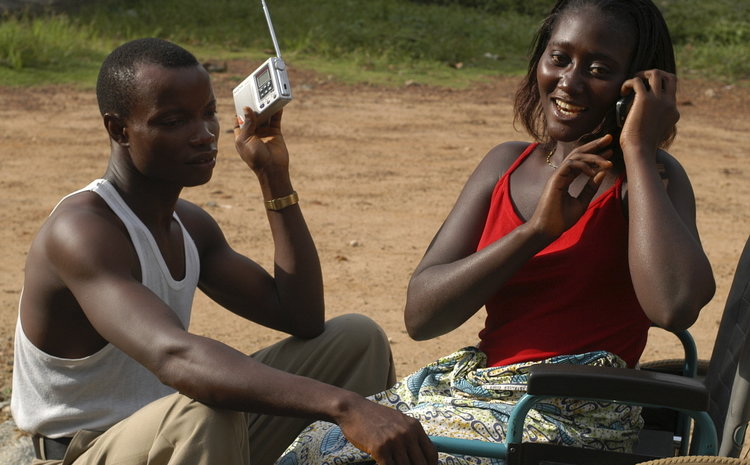By: Hannah Kuper
Send to a friend
The details you provide on this page will not be used to send unsolicited email, and will not be sold to a 3rd party. See privacy policy.
About 4.5 billion people worldwide have a mobile phone — about as many as have access to a toilet. [1,2] No wonder these mobile devices are being put to many new uses, including to collect data in Ebola vaccine trials in West Africa later this year.
Mobile phones can change healthcare for disabled people in other ways too, beyond collecting data for research. Many people with disabilities in poor settings have conditions that can be treated, but are often not diagnosed. One major reason is that the clinicians needed are often based in the big cities, far from the people in need. Mobile technology can take the diagnosis to the patient.
One example is Peek Vision, an app and lens adaptor that performs “professional eye exams from your phone”, as the advertising blurb runs. This includes taking an image of the retina with a smartphone. It is so simple that even I managed to do this without any trouble, although I have no special training in these devices. The image can then be texted to a clinician who can make a remote diagnosis and recommend treatment (see video below for more on how it works). The device is due to be launched globally this year and will cost about US$100. It is targeted at health workers around the world, and costs a fraction of the price of existing devices to examine eyes and so fills an important gap.
A similar smartphone adaptor can be used to take an image of the inside of the ear, which can be sent to a clinician to diagnose ear problems, such as infections or impacted ear wax, which can cause hearing loss. A basic version of CellScope costs US$79, while a more-specialised version for doctors is US$299.
The great thing about both these products is that they are as good as the standard medical equipment, but much cheaper. This offers real potential for widespread use and preventing blindness and hearing loss.
These tools can go a long way to working out which treatments people need. But by themselves they won’t solve the challenge of linking the patient to the health service, and making sure they get appropriate services.
Here again, mobile phones may help. For instance, a PhD student in my research group is developing a mobile phone app to manage disabilities after a stroke. Care For Stroke gives guidance on how patients can perform physiotherapy exercises, how carers can wash and move patients, and where to find further information on the condition. Early pilots in India show it is popular with patients and carers, and generally used every day.
These types of approaches could be rolled out to other settings and for other conditions, such as diagnosing Parkinson’s disease or delivering mental health programmes. [3] Mobile phones can help make information on health more accessible for disabled people. They can also help in other spheres of public health: to send texts to encourage people to stop smoking or remind patients to take medication, for example. Phones can also be used by patients to book appointments and by doctors to enable follow-ups.
Mobile phone technology can revolutionise research, diagnosis and care for people with disabilities. The trick is to keep the technology cheap and appropriate to need.
Hannah Kuper is codirector of the International Centre for Evidence in Disability at the London School of Hygiene & Tropical Medicine, United Kingdom. The centre is on Twitter as @ICED_LSHTM, and Kuper can be contacted on [email protected]
Kuper has contributed to Peek Vision’s ongoing development.
References
[1] Ericsson mobility report: On the pulse of the networked society (interim update) (Ericsson, February 2014)
[2] Sanitation (UN-Water, accessed 11 February 2015)
[3] Tara Donker and others Smartphones for smarter delivery of mental health programs: a systematic review (Journal of Medical Internet Research, November 2013)














